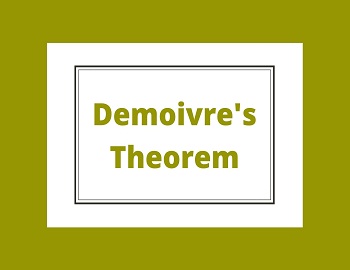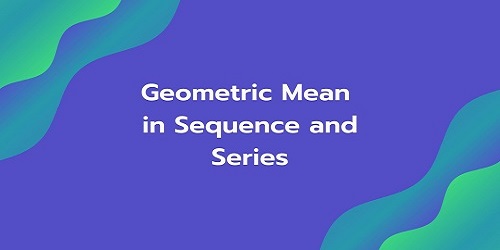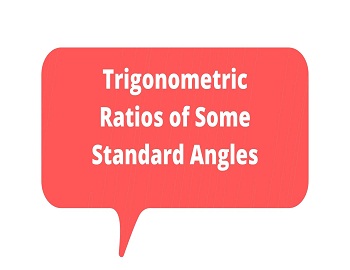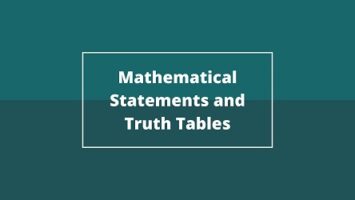Basic Principles of Counting:
There are two fundamental principles connected to the process of counting. These two principles are known as the principle of addition and the principle of multiplication.
The Fundamental Principle of Addition states, “If two operations can be performed independently in m and n ways respectively, then the total number of ways in which either of these two operations can be performed is (m + n).”
Let us take one simple example to make the point clear. Consider that there are 5 candidates for a prize in debate, 7 candidates for a prize in recitation, and 3 candidates for a prize in music. In how many ways can one of these prizes be given? In this case, the prize for debate can be given to any one of the 5 candidates. So, this job of awarding the prize for debate can be done in 5 ways. Similarly, the second job of awarding the prize for recitation can be performed in 7 ways. The third job can be performed similarly in 3 ways. Obviously, then, the number of ways in which any one of these three jobs can be performed in (5 + 7 + 3) i.e. 15. Remember that in this case, the aim is to perform either the first job or the second job, or the third job.
The Fundamental Principle of Multiplication states, “If one operation can be performed in m ways and if after the first operation has been performed in any one of these ways, a second operation can be performed in n ways, then the number of ways in which these two operations can be performed together is m x n?”
In the above example if the question is to find out the number of ways in which the prizes in the three categories can be awarded, then our line of thinking would be different. Here, all the three prizes are to be awarded. So the question is to perform each of the three jobs (and not any one of them). The first job can be performed in 5 ways. When the first job has been performed in any one of the possible 5 ways, the second job can be performed in 7 ways. So, the number of ways of performing these two jobs together is 5 x 7. When these two jobs have been performed in any one of the possible 35 ways, the third job can be done in any one of 3 ways. So, the number of ways in which these three jobs can be performed together is 35 x 3 i.e. 105.
The basic difference between the principle of addition and the principle of multiplication is that in the former case, any one of the different jobs is to be performed, whereas, in the latter, each of the different jobs is to be performed. The fundamental principles of addition and multiplication can be extended to any number of operations.
| Example 1: There are twelve buses running between two places A and B. In how many ways can a person go from A to B and then return by a different bus? Solution: Number of buses available from A to B = 12 So a person can go from A to B in either of these twelve buses in 12 ways. While returning from B to A he has to board a bus different from the bus from which he came. The number of ways of selecting a bus from B to A = 11. ∴ Total number of ways = 12 x 11 = 132 |
| Example 2: There are four candidates for Physics, five for Mathematics, and seven for chemistry scholarship. Find the number of ways in which (a) these scholarships be awarded (b) one of these scholarships be awarded. Solution- Number of Physics scholarships = 4 Number of Mathematics scholarships = 5 Number of Chemistry scholarships = 7 The number of ways of awarding Physics, Maths, and Chemistry scholarships is 4, 5, and 7 respectively. (a) Total number of ways of awarding all the scholarships = 4 x 5 x 7 = 140 (b) Number of ways of awarding any one of these scholarships = 4 + 5 + 7 = 16 |
| Example 3: The flag of a newly formed club is in the form of three blocks, each to be colored differently. If there are six different colors, on the whole, to choose from, find the number of such possible designs. Solution- The number of colors available to fill the first block is 6. So the first block can be filled in 6 ways. Since each block is to be colored differently so second and third blocks can be filled in 5 and 4 ways respectively. ∴ Total number of ways = 6 x 5 x 4 = 120 |
| Example 4: How many numbers are there between 100 and 1000 in which all the digits are distinct? Solution- Between 100 and 1000 there are three digit numbers. Now the 100 place can be filled from the digits 0 to 9 except 0 in 9 ways. Since all the digits are distinct so the tens place can be filled from the remaining 9 digits in 9 ways and the ones place can be filled from the remaining 8 digits in 8 ways. ∴ Total number of ways of forming a number between 100 and 1000 = 9 x 9 x 8 = 648 |
| Example 5: Find the number of three digit numbers that can be formed without using the digits 0, 2, 3, 5, 7, and 8. Solution- Digits that can be used other than 0, 2, 3, 5, 7, and 8 are 1, 4, 6, and 9 which are four in number. Now, the hundreds place can be filled from 4 digits in 4 ways. Since repetition of digits is allowed so the tens place can be filled in 4 and 4 ways respectively. ∴ Total number of ways = 4 x 4 x 4 = 64 |
| Example 6: How many numbers are there between 100 and 1000 such that every digit is either 1 or 9? Solution- Between 100 and 1000 there are three digit numbers. It is given that the digit in the unit’s place is 2. The digit in the ten’s place can be any one of the ten integers 0 to 9. Th digit in the hundreds place can be any one of the 9 integers 1 to 9 (zero cannot be there at the hundred’s place). ∴Total number of ways of forming a number of numbers lying between 100 and 1000 = 10 x 9 = 90 |
| Example 7: Calculate the number of numbers between 100 and 1000 such that at least one of their digits is 2. Solution- The numbers between 100 and 1000 such that at least one of their digit is 2, can be classified into three types. (a) Numbers that have 2 in the unit’s place. Here the ten’s place can be occupied by any one of the ten’s integers 0 to 9 and the hundred’s place can be occupied by any one of the 9 integers 1 to 9 (zero cannot be there at hundred’s place). ∴ Total number of ways = 10 x 9 = 90 numbers (ii) Numbers that have 2 in the ten’s place. Here the unit’s place can be occupied by any one of 9 integers 0 to 9 and the hundred’s place can be occupied by any of the 9 integers 1 to 9. ∴ Total number of ways = 9 x 9 = 81 numbers (iii) Numbers that have 2 in the hundred’s place. Here the unit’s place and the ten’s place each can be occupied by any one of the 9 integers 0 to 9. ∴ Total number of ways = 9 x 9 = 81 numbers Hence the required number of numbers = 90 + 81 + 81 = 252 |
| Example 8: Calculate the number of numbers between 100 and 1000 having exactly one of their digits as 2. Solution- The numbers between 100 and 1000 having 2 as exactly one of their digit can be classified into three types. (i) When the unit’s place has 2. Here the ten’s place can have any one of the digits except 2. It can be filled in 9 different ways. The hundred’s place can have any one of the digits except 0 to 2. So a hundred’s place can be filled in 8 different ways. ∴ Total number of ways = 9 x 8 = 72 such numbers (ii) When the ten’s place has 2. The units’ place can be filled in 9 different ways. It can have any one of the digits except 2. The hundred’s place can have any one of the digits except 0 and 2. So a hundred’s place can be filled in 8 different ways. ∴ Total number of ways = 9 x 8 = 72 such numbers (iii) When the hundred’s place has 2. Here the unit’s place can be filled in 9 different ways (except 2) and ten’s place can be filled in 9 different ways (except 2). ∴ Total number of ways = 9 x 9 = 81 such numbers Hence the total number of ways = 72 + 72 + 81 = 225 |









Comments (No)